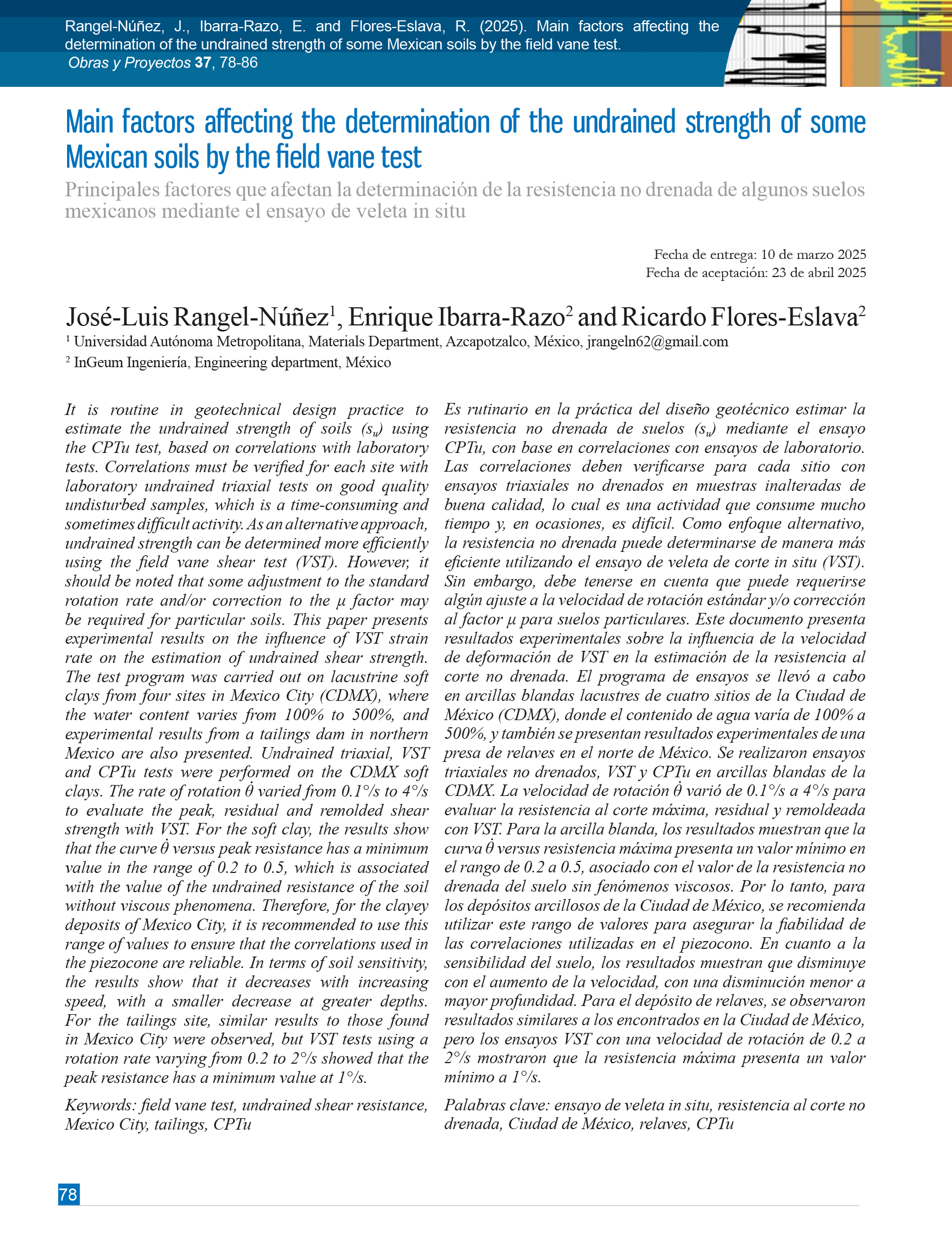Main factors affecting the determination of the undrained strength of some Mexican soils by the field vane test
DOI:
https://doi.org/10.21703/0718-2813.2025.37.3239Keywords:
field vane test, undrained shear resistance, Mexico City, tailings, CPTuAbstract
It is routine in geotechnical design practice to estimate the undrained strength of soils (su) using the CPTu test, based on correlations with laboratory tests. Correlations must be verified for each site with laboratory undrained triaxial tests on good quality
undisturbed samples, which is a time-consuming and sometimes difficult activity. As an alternative approach, undrained strength can be determined more efficiently using the field vane shear test (VST). However, it should be noted that some adjustment to the standard rotation rate and/or correction to the μ factor may be required for particular soils. This paper presents experimental results on the influence of VST strain rate on the estimation of undrained shear strength. The test program was carried out on lacustrine soft clays from four sites in Mexico City (CDMX), where the water content varies from 100% to 500%, and experimental results from a tailings dam in northern Mexico are also presented. Undrained triaxial, VST and CPTu tests were performed on the CDMX soft clays. The rate of rotation varied from 0.1°/s to 4°/s to evaluate the peak, residual and remolded shear strength with VST. For the soft clay, the results show that the curve versus peak resistance has a minimum value in the range of 0.2 to 0.5, which is associated with the value of the undrained resistance of the soil without viscous phenomena. Therefore, for the clayey deposits of Mexico City, it is recommended to use this range of values to ensure that the correlations used in the piezocone are reliable. In terms of soil sensitivity, the results show that it decreases with increasing speed, with a smaller decrease at greater depths. For the tailings site, similar results to those found in Mexico City were observed, but VST tests using a rotation rate varying from 0.2 to 2°/s showed that the peak resistance has a minimum value at 1°/s.

Downloads
Published
Issue
Section
License
Copyright (c) 2025 Universidad Católica de la Santísima Concepción

This work is licensed under a Creative Commons Attribution-NonCommercial 4.0 International License.







